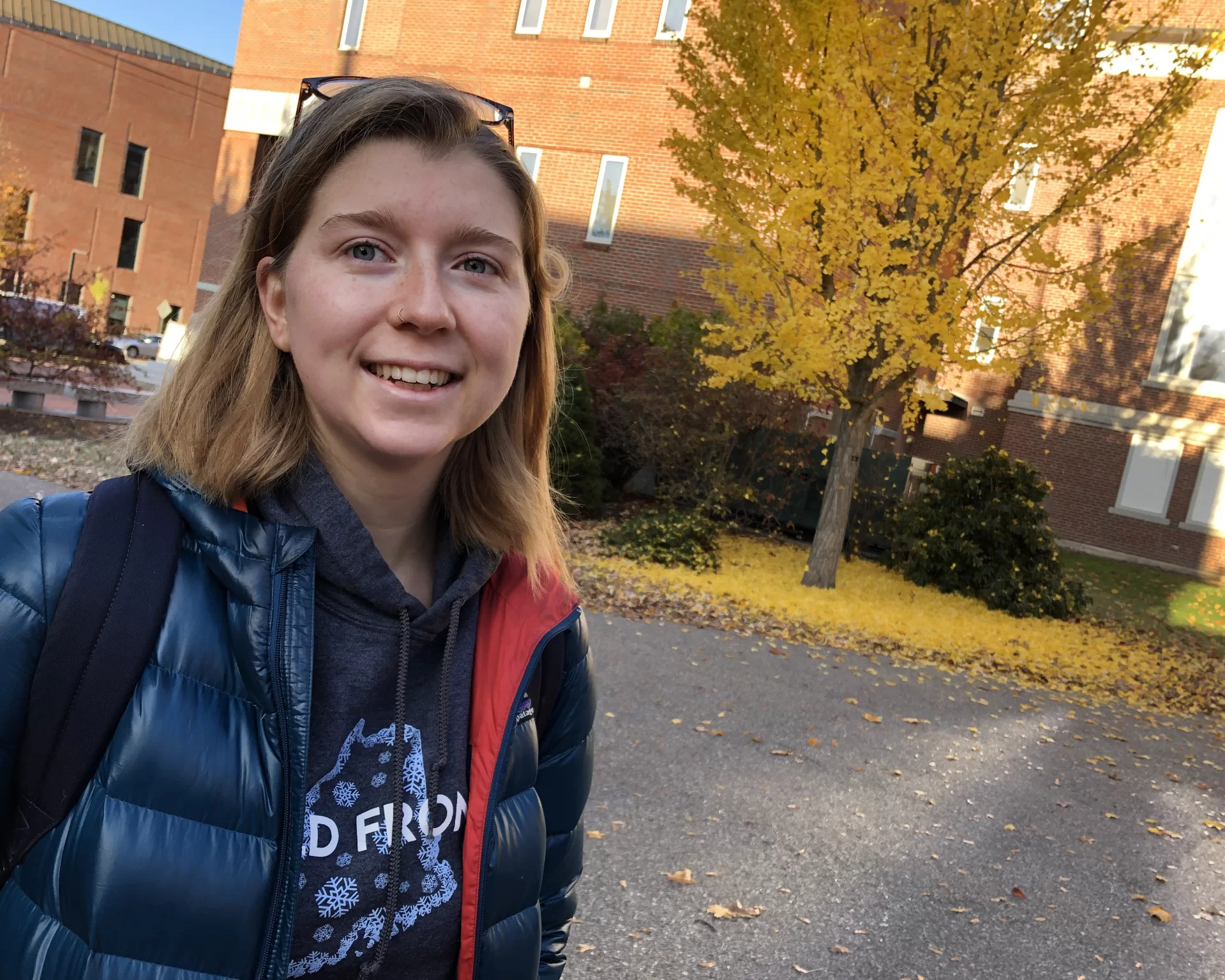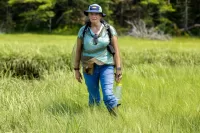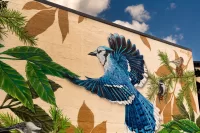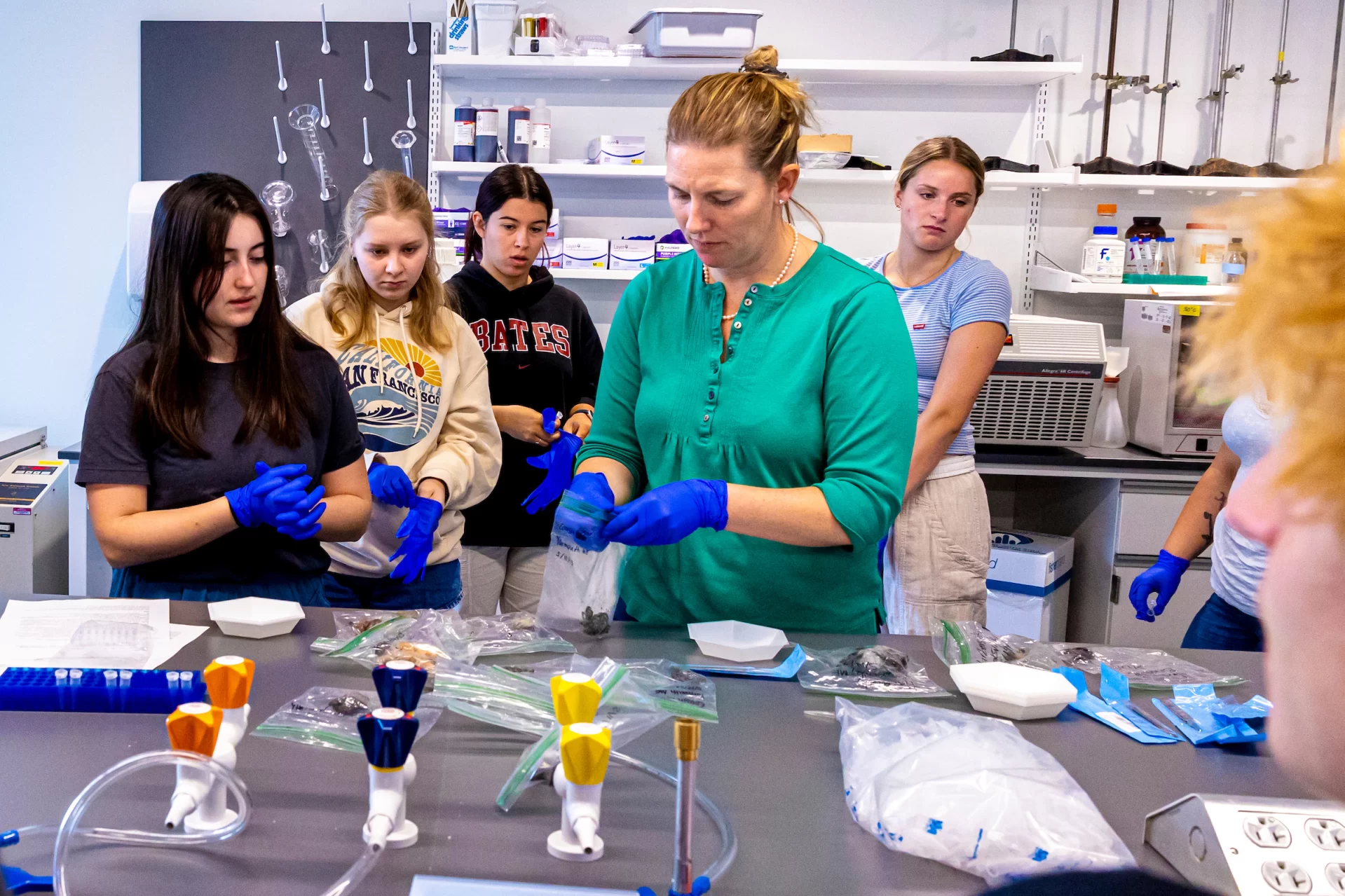
“Ginkgo day is a good day,” said a passerby, gazing at the ginkgo tree outside Carnegie Science Hall as it commenced its annual leaf drop last Thursday.
The morning was below-freezing and crisp, so it was go time for the ginkgo.
“I had a feeling that today would be the day,” said Emma Christman ’22, a biology and geology double major from Litchfield, Maine, as she stopped to watch the ginkgo’s bright yellow leaves cascade to the ground on Nov. 4. “It’s cold enough.”
Like the blooming of the magnolia tree outside Hathorn Hall each April, the ginkgo’s leaf drop — typically in November — signals the change of season.
In autumn, leaves fall when an “abscission layer” forms between leaf and stem. Most trees form these layers gradually, so leaves fall off over time. But ginkgos form abscission layers simultaneously. It’s believed that a hard frost completes the process, leading to the leaves falling off in one fell swoop, like last Thursday.
The process of a leaf going from green to yellow to floating to the ground, is called senescence, and it’s complex and not completely understood, says Associate Professor of Biology Brett Hugget. “There is a lot going on. In a ginkgo, senescence is controlled by plant hormones, such as methyl jasmonate.”
Since 2017, Huggett and his students in his course “Dendrology and the Natural History of Trees” have maintained the Bates Canopy website, work that includes placing identification tags on campus trees with the tree’s species name and a QR code that link to the tree’s page on the canopy website.
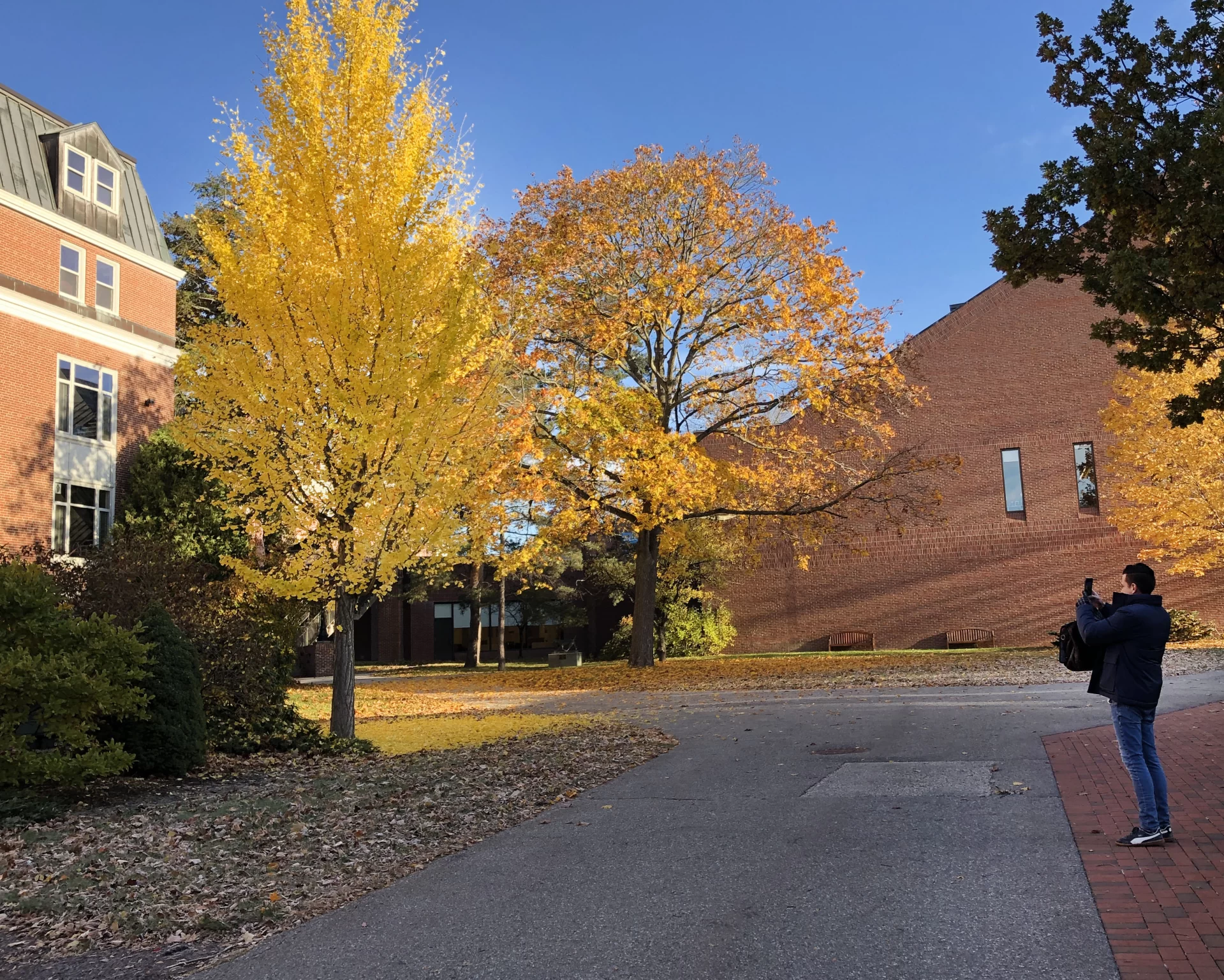
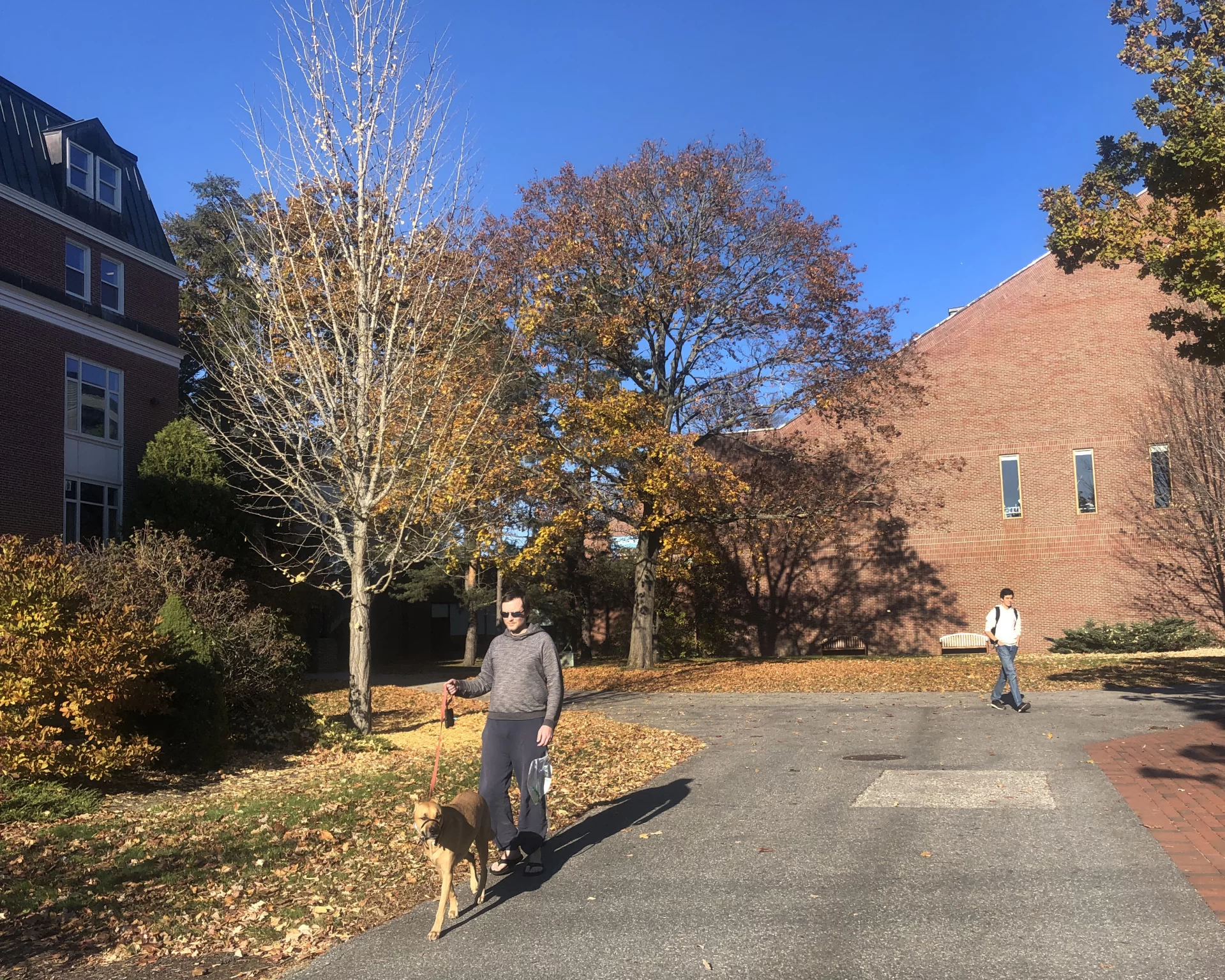
During a brief conversation near the ginkgo, Christman, who took Huggett’s dendrology course in 2019, pointed out things old and new about Bates trees. “I try to keep in touch with the trees,” she said with a laugh.
For one, she knew that the college’s oldest historic elm located just outside the front doors of Alumni Gymnasium, had recently been taken down due to disease. “I counted the rings and got 136 — so roughly the year 1885,” she said, meaning it predates Alumni Gym, constructed in 1928. (Other, younger elms still dot the campus.)
In terms of what’s new, she was also aware that the Carnegie ginkgo now has company: the saplings planted in front of newly opened Bonney Science Center are ginkgos.
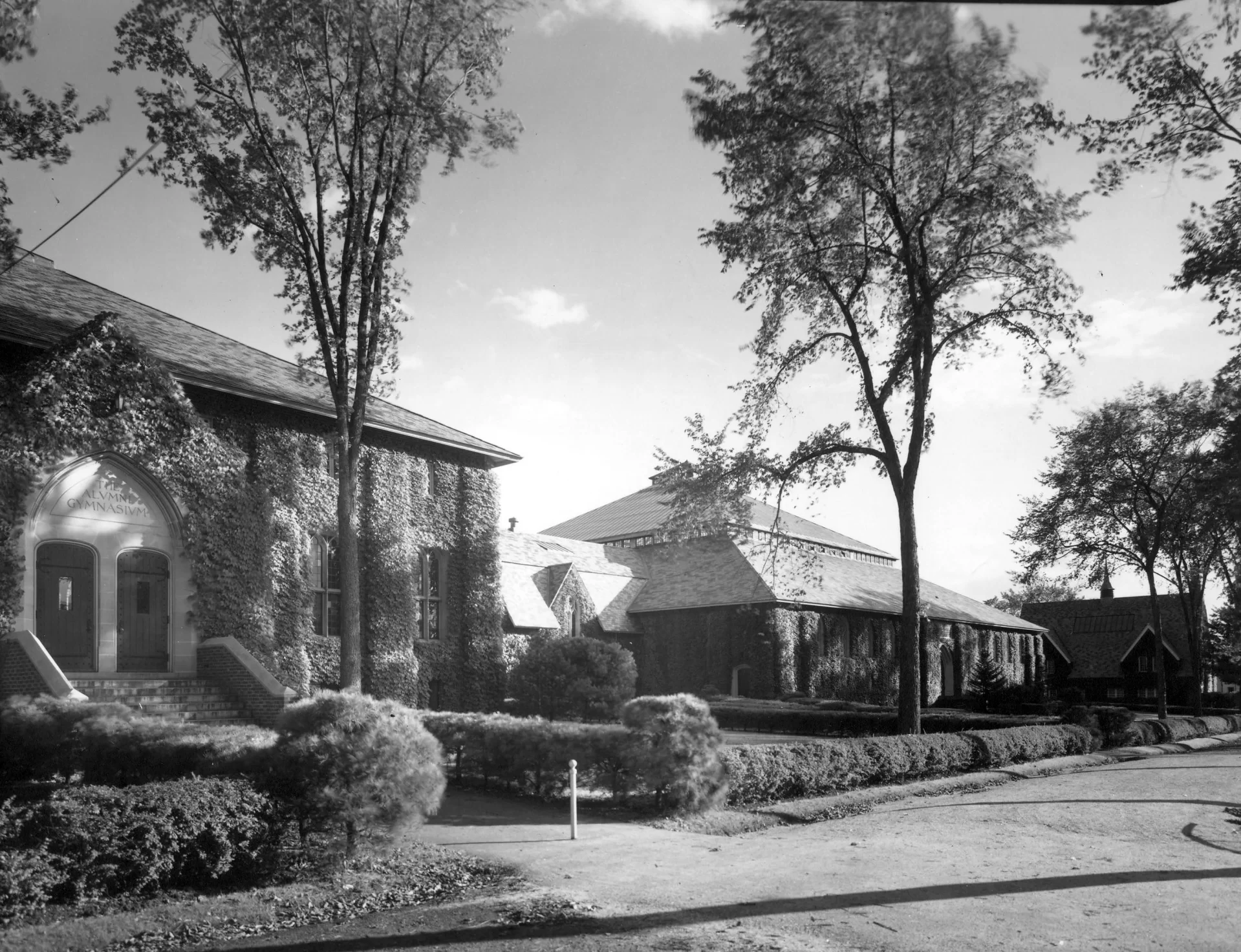
The Carnegie ginkgo “is such a cool tree, and in such a fun spot — you can’t walk by without seeing it,” she said. Christman is also aware that ginkgos are known as “living fossils” because it’s one of the few tree species living today of which fossilized records exist from more than a hundred million years ago.
When not checking in with campus trees, Christman is working on her joint biology and geology thesis, advised by Professor of Earth and Climate Sciences Mike Retelle, now in his final year of teaching before retirement.
She’s conducting a study of 10,000-year-old ocean quahog shells, of the species Arctica islandica, pulled from the sea bottom off Svalbard, a Norwegian archipelago in the Arctic Ocean.
“I’m reconstructing the ocean temperatures from when they were alive,” said Christman. Joining her on the project are fellow geology majors Maya McDonough ’22 and Dewi Henry ‘22. Retelle has dubbed the group “The Clam Team.”
“I just got my first set of data yesterday — very exciting. It’s such cool stuff,” she said, then headed off for an exam in her marine botany class.
